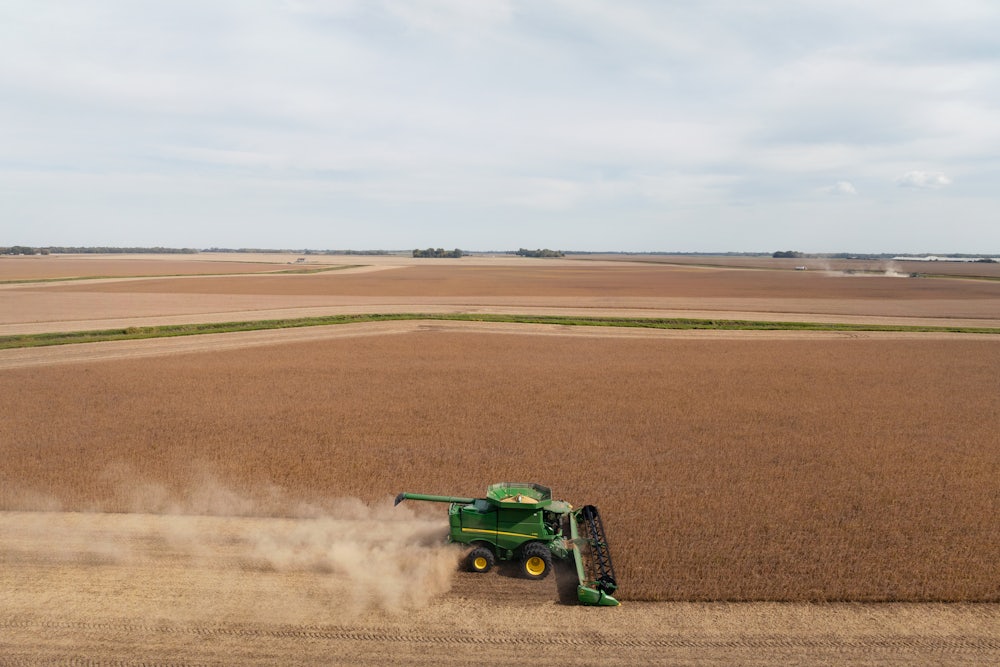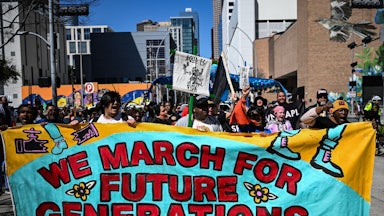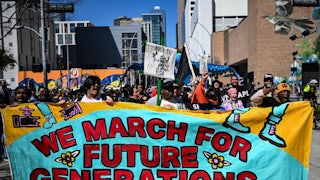Usually, the best thing about being in the American soy business is the predictability. Buy seeds from the same companies, sow them, water them, harvest the crop, and sell to the same buyers who have been buying it for decades. The last few years have been particularly profitable, with historically high prices and a consistent client in China, the world’s biggest buyer of soy. The United States is the world’s second-biggest producer of soy, after Brazil, growing over 80 million acres of the oily bean across vast swathes of the country’s farmland. About a quarter of all that crop goes straight to China, bringing in $13.2 billion last year alone.
Now that market is gone, as is any predictability. After the U.S. levied heavy tariffs on Chinese imports in April, China responded by refusing to buy American soy. That was in May. Now, with the American soy harvest nearing the end of its season, American farmers are panicking. As the global soy value chain rearranges in real time, Brazil has become China’s biggest supplier while Americans go hat in hand to small markets like Nigeria and Vietnam hoping to cut some deals. The Trump administration has hinted at a bailout. And to add insult to injury, Argentina, which the administration just promised a $20 billion currency swap to rescue its flailing economy, is now selling shiploads of soy to China.
This agricultural drama has been getting a lot of media attention over the past few weeks, in part because it is exemplary of the helter-skelter policymaking of the Trump administration and its unpredictable global implications. The bigger story about soy, though, isn’t the current trade war but the fact we’re producing far too much of the crop—not so humans can eat it, but so animals can.
In 1962, China’s per-capita gross domestic product was $71 and the average Chinese person ate about nine pounds of meat per year. But as the country industrialized and urbanized, in the wake of Deng Xiaoping’s economic reforms, increased consumer spending power fed a growing appetite for meat, especially pork. That, in turn, drove the country to pursue agricultural modernization, replacing smallholder farms with industrialized ones and embracing an “industrial meat regime” rooted in factory farming pork and poultry. In remaking its economy, China also remade its diet. Today, China’s per-capita meat consumption is 154 pounds. The country has grown into the world’s biggest pork producer and pioneered massive pig production facilities like a 26-story megafarm in Hubei province.
Factory farming entails taking animals out of fields and growing them for the entirety of their lives in enclosed warehouses where their diets can be optimized to maximize quick growth for slaughter. But to feed all those animals, the fields need to be used to grow feed like corn and soy in massive quantities. China embraced soy production, but soon its demand for meat far outstripped its supply of available land. Today it imports 85 percent of the soy it uses, representing 60 percent of all global soy imports.
While China’s embrace of a meat-heavy diet is remarkable in its speed and scale, it is only catching up to Europe, which has long practiced factory farming, and still lags the United States, which pioneered industrial animal farming and where per-capita meat consumption is 220 pounds per year (and more if you count fish). The geographer Tony Weis calls the remaking of food systems to serve factory farming “meatification,” which entails diverting grain and oilseed production from human food toward animal feed. In the U.S., 35 percent of all corn and over 90 percent of soy becomes animal feed. In fact, 67 percent of all crops go to animal feed while 27 percent go directly to humans (the rest goes to biofuels). (Globally, 77 percent of all soy goes to animal feed; only 7 percent goes to human food like soy milk and tofu.) While this is inefficient and environmentally dubious, at least the U.S. can handle its domestic demand. The EU and China can’t. Hence the huge market for American soy abroad and Brazil’s and Argentina’s massive soy economies.
As China’s demand for foreign soy grew, American farmers grew more of it: U.S. soy production and exports have doubled over the past 30 years, roughly tracking increases in Chinese meat consumption and soy demand for feed. The same was the case in Brazil. Importing soy amounts to offshoring demand for land. And that means offshoring deforestation. Most deforestation to create new soy farms takes place in South America. And with the U.S. cut off by China, Brazil is ending a moratorium on deforestation to cash in.
This is just one of the many harms caused by a global appetite for meat. The recently released “EAT-Lancet Commission on healthy, sustainable, and just food systems”—a collaboration between the Swedish food nongovernmental organization EAT and the prestigious British medical journal The Lancet—shows that the global food system is outstripping planetary boundaries and driving unsustainable climate change, land use change, and eutrophication of water. The single biggest culprit by far is meat. China may have offshored deforestation, but its glut of factory farms has caused a series of crises at home, as well, such as widespread pollution and animal disease outbreaks, including a swine fever epidemic in 2019 that killed tens of millions of animals.
The irony here is that soy itself is an incredible crop and food. It’s hardy, adaptable, cheap to grow, and it fixes nitrogen in the soil, minimizing the need for fertilizer. The soybean is highly nutritious, packed with 35 percent protein and easy to cook or process into a variety of products, from oil and soy milk through to edamame, tofu, tempeh, and plant-based meats like Impossible burgers. This polyvalence and ease of use is precisely why it’s so widely used in animal feed. It’s just that feeding it to animals, beyond the environmental downsides, is inefficient. Any animal will consume far more calories and protein over its lifetime than it will yield as meat; the average pig will only yield about 9 percent of the protein that it consumes. Eating soy directly requires far less soy (and land) than feeding it to animals.
It’s not that soy is inherently harmful. It’s how we use it that’s harmful.
Yes, American soy farmers are suffering. But we should take this moment to reflect on why we use so much American farmland to feed pigs both at home and in China, giving fuel to an environmentally destructive industry. How much soy we produce shouldn’t be a barometer for how well our agriculture sector is doing but for how unsustainable it is.






